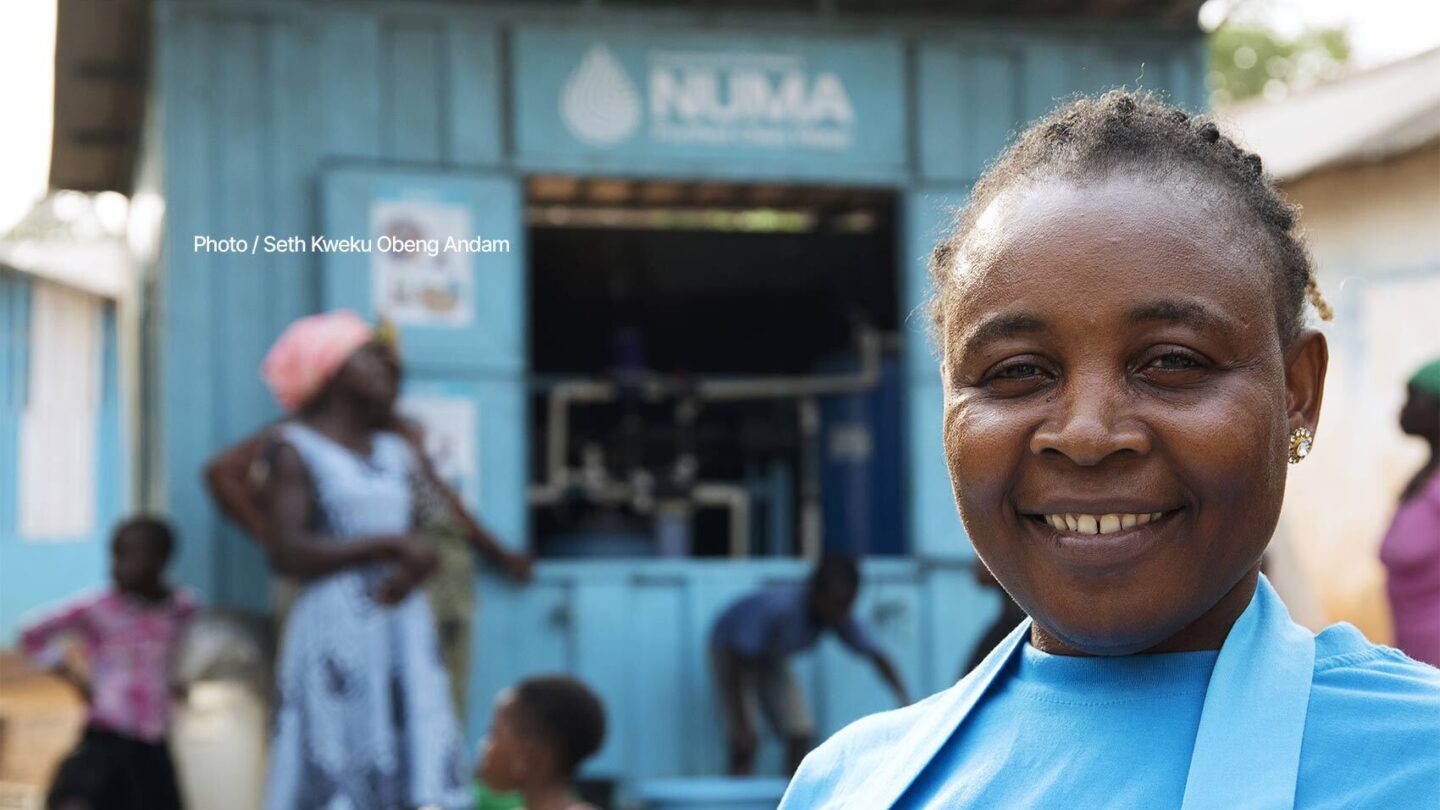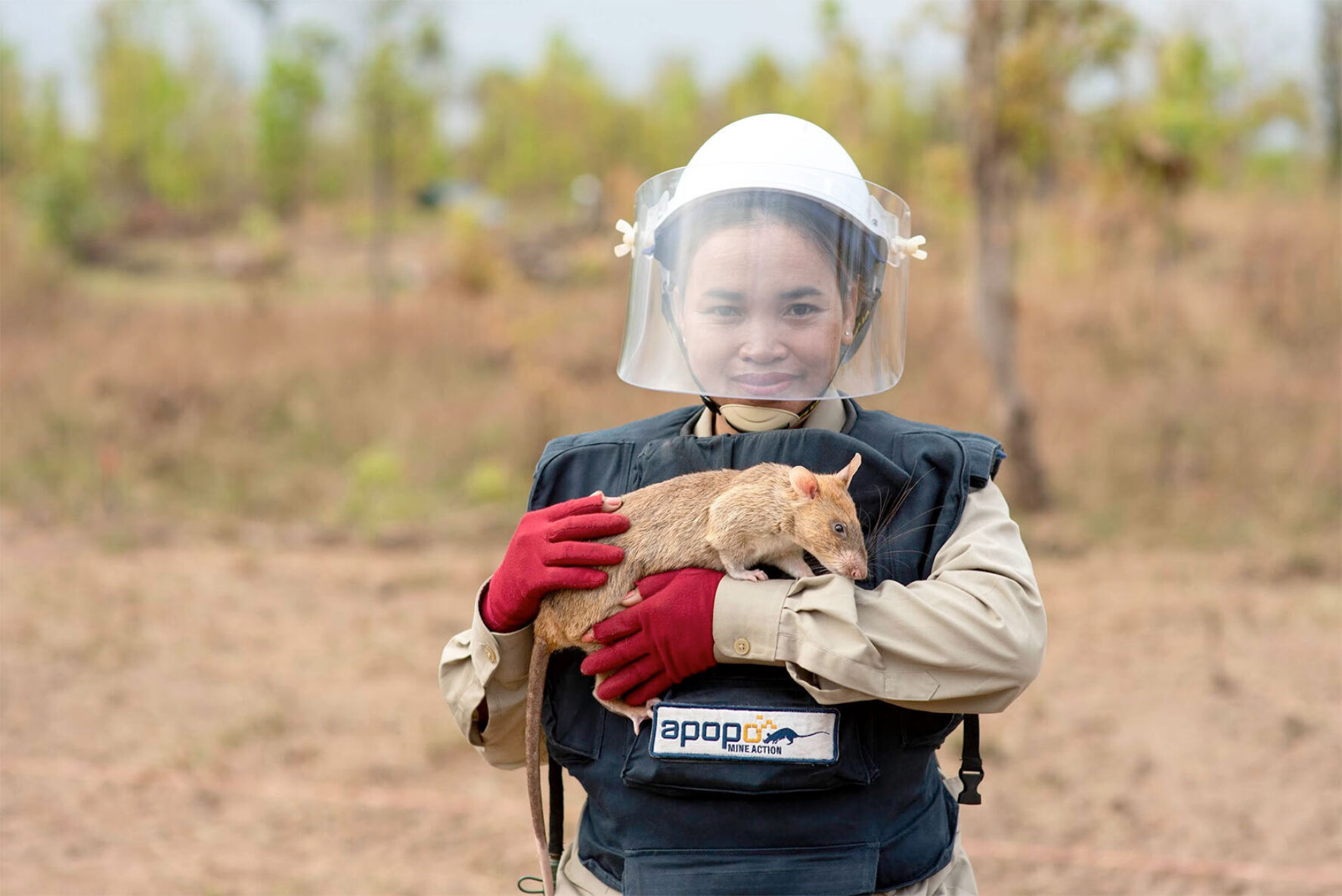
Supporting a water access business in Ghana to scale their operations
We helped Water4 to scope and assess the potential for innovative finance to grow the impact of their community water delivery system.

We partnered with the Foreign, Commonwealth and Development Office (FCDO), APOPO – who train rats to detect landmines – and Cordaid to design the Mine Fields to Rice Fields development impact bond (DIB), with the goal of clearing landmines from 3.8m square metres of land and supporting local farmers with land in mine-affected areas to grow and sell organic rice.
Cambodia is one of the most mine-affected countries in the world, with an estimated 800km² of its land still contaminated. This presents a significant humanitarian and economic challenge, compromising the safety of local communities and preventing land from being used for income-generating activities like agriculture.
Rice farming is at the centre of Cambodia’s large agricultural sector, accounting for more than half of the country’s agricultural GDP. But rice productivity is relatively low compared to some neighbouring countries. This is a particular problem amongst rural smallholder rice farmers, who do not have the resources to break the low-input subsistence farming cycle, and face challenges in accessing rice markets, hindering their ability to sell their rice at a reasonable price.

The DIB addresses both challenges simultaneously. First, it aims to clear approximately 3.8m square metres of land in Preah Vihear, one of the most mine-affected provinces due to its rural location, forested terrain and close proximity to the border with Thailand. Clearing landmines will increase safety and freedom of movement for local communities, and allow farmers to make more productive use of their land.
After clearance, approximately 80 farmers who had land in mine-affected areas will be supported to grow organic rice through training, coaching, and marketing support. The aim is to increase their net income by 20–35% over two years, thereby reducing levels of household poverty.

Social Finance were excellent to work with! Our project had extremely tight timelines and deliverables, and they worked tirelessly to deliver high quality work on time. They also were great at listening to and then incorporating partner feedback from two different industries into the model.
Charlie, APOPO
There were three broad insights from our work on this DIB:
This DIB represents an exciting opportunity to better integrate two normally distinct activities: mine action and support for agricultural development. Though mine clearance can make more land available for safe and productive agricultural use, often there is not the necessary support to allow this to happen. By closely tying longer-term agricultural development outcomes (namely farmers’ net income increase from organic rice farming) to mine action outcomes, the DIB incentivises integration of mine clearance with support for productive agricultural activity.
Investors will only make a return if agricultural outcomes (i.e. increased income from organic rice) are achieved. This incentivises close collaboration between the mine action and agricultural development service providers throughout project implementation.
This DIB is a two-year pilot with the aim of scaling within Cambodia, and replicating the model in other mine-affected countries, such as Vietnam, Laos, Myanmar and Ukraine. In such countries, the model could support closer integration of mine clearance with other forms of post-clearance economic activity (e.g. growth of small and medium-sized enterprises). Therefore, there will be a strong focus on implementing a robust learning agenda to gather critical information to evaluate performance and cost-effectiveness of the model.
Learn more about our work in this area by reading our 2021 report, Innovative finance for mine action, or our blog, Save lives, speed up development: Innovative finance and landmine clearance.